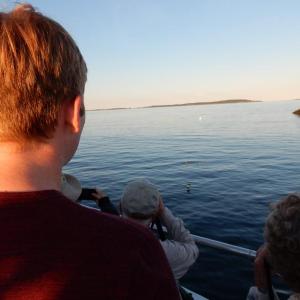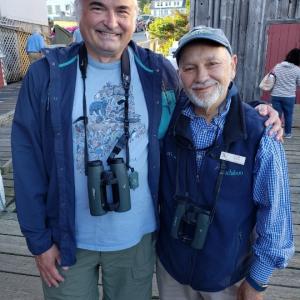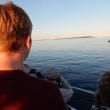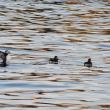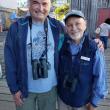Transported By Puffins
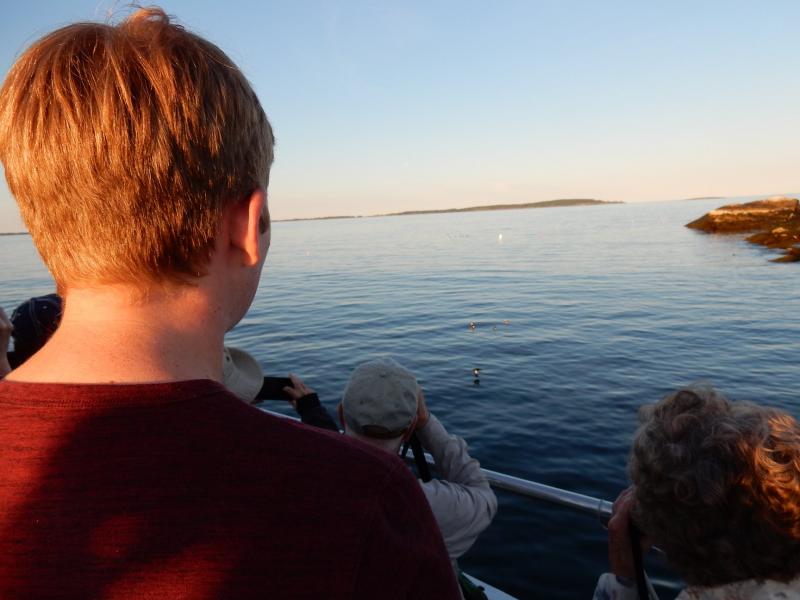 We were among more than 100 members of the Natural Resources Council of Maine who enjoyed a recent puffin cruise to Eastern Egg Rock aboard the Hardy Boat. Courtesy of Allison Wells/NRCM
We were among more than 100 members of the Natural Resources Council of Maine who enjoyed a recent puffin cruise to Eastern Egg Rock aboard the Hardy Boat. Courtesy of Allison Wells/NRCM
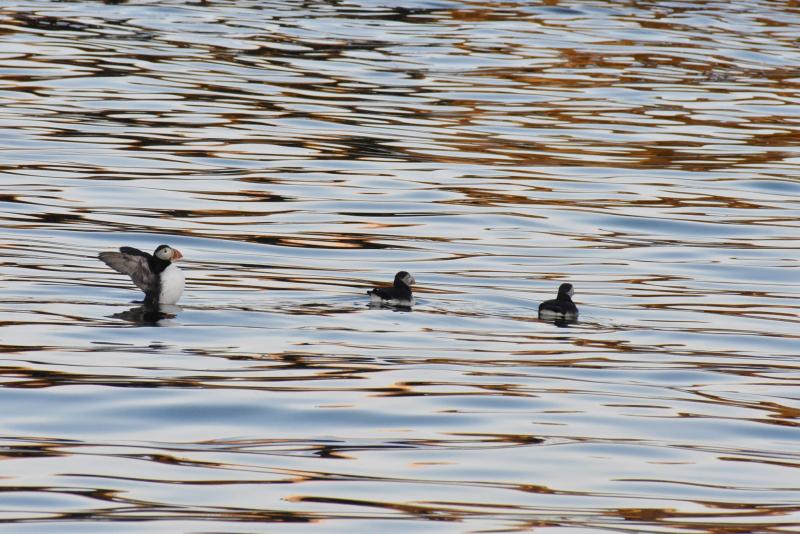 The puffins did not disappoint! Courtesy of Beth Comeau/Natural Resources Council of Maine
The puffins did not disappoint! Courtesy of Beth Comeau/Natural Resources Council of Maine
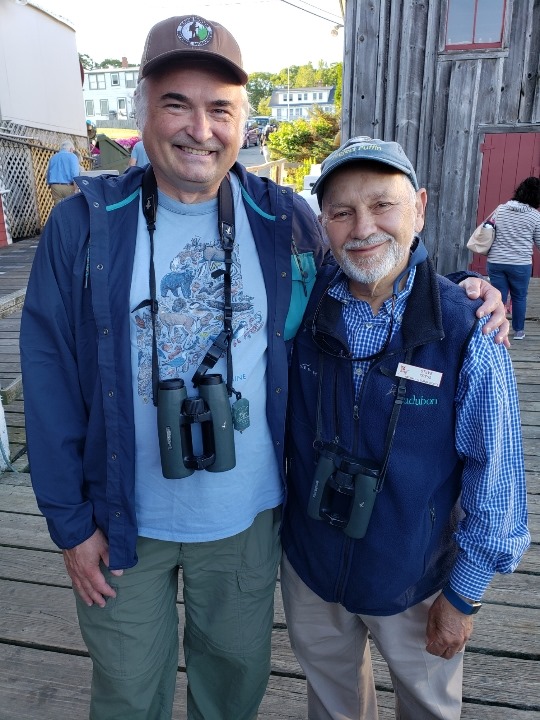 Jeff Wells with long-time friend and Project Puffin founder Dr. Steve Kress, who joined NRCM as narrator for the puffin cruise. Courtesy of Beth Comeau/NRCM
Jeff Wells with long-time friend and Project Puffin founder Dr. Steve Kress, who joined NRCM as narrator for the puffin cruise. Courtesy of Beth Comeau/NRCM
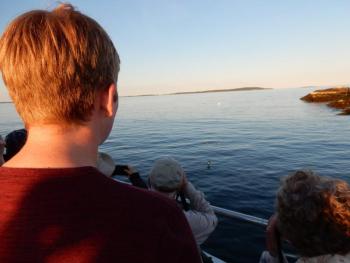 We were among more than 100 members of the Natural Resources Council of Maine who enjoyed a recent puffin cruise to Eastern Egg Rock aboard the Hardy Boat. Courtesy of Allison Wells/NRCM
We were among more than 100 members of the Natural Resources Council of Maine who enjoyed a recent puffin cruise to Eastern Egg Rock aboard the Hardy Boat. Courtesy of Allison Wells/NRCM
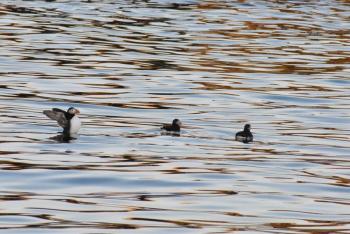 The puffins did not disappoint! Courtesy of Beth Comeau/Natural Resources Council of Maine
The puffins did not disappoint! Courtesy of Beth Comeau/Natural Resources Council of Maine
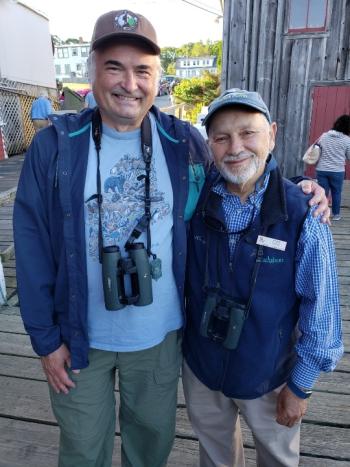 Jeff Wells with long-time friend and Project Puffin founder Dr. Steve Kress, who joined NRCM as narrator for the puffin cruise. Courtesy of Beth Comeau/NRCM
Jeff Wells with long-time friend and Project Puffin founder Dr. Steve Kress, who joined NRCM as narrator for the puffin cruise. Courtesy of Beth Comeau/NRCM
It’s amazing how a vastly different world can be so close to us but, for the most part, largely invisible. Invisible, that is, until you hop on a boat.
We joined more than a hundred other people on a gorgeous summer evening last week to do just that. The famed Hardy Boat, owned and operated by Al and Stacie Crocetti, departed from the dock in New Harbor (next to the popular Shaw’s Fish and Lobster Wharf Restaurant) at 7 pm and took us to what almost seems like an other-worldly place.
Our destination was the famed Eastern Egg Rock, a tiny island about 900 feet long and 500 feet wide, located five miles off shore from New Harbor and the Pemaquid Peninsula. That tiny island (and its sister island of Western Egg Rock) were so named because hundreds of years ago the early fishermen and European settlers harvested eggs from the colonies of seabirds that nested on them. From the mid 1800s into the early 1900s, large numbers of adult seabirds were also killed on these and other Maine islands for their feathers and for food.
One of the casualties of this heavy exploitation was the colony of Atlantic puffins that had nested on Eastern Egg Rock. They disappeared from the island by the late 1800s. By the 1930s, the terns that had nested for millenia on the island were also driven away.
Luckily for all of us, a very optimistic young National Audubon scientist named Steve Kress, arrived in Maine in the 1970s. Steve learned about the past history of Eastern Egg Rock and wondered whether it could be possible to turn it into a thriving seabird colony once again, including with nesting puffins. Steve didn’t listen to the naysayers who told him it was not possible or that it was too difficult or too costly. He forged ahead and found a way to transport tiny puffin chicks from Newfoundland to the island. He and his assistants placed the chicks in artificial burrows of a sort and with sheer dedication fed them for weeks. When the chicks were old enough to take care of themselves, the birds left for the sea.
Steve and his team kept this up for years, eventually transporting and rearing almost a thousand puffin chicks. They watched and waited during those years until finally in 1981 five pairs of puffins came back to nest. Eastern Egg Rock was the host of a puffin colony again after a 100-year absence of the species. The island now supports more than 150 pairs of nesting Atlantic puffins. There are also large numbers of black guillemots as well as more than a thousand pairs of breeding terns of three species (common, roseate, and Arctic).
Our trip to the island was hosted by the Natural Resources Council of Maine specifically for its members, and the hundred plus participants were honored to have the amazing Steve Kress as our tour guide and narrator. It was heartening and delightful to see literally hundreds of bright orange-billed puffins within yards of the boat, sometimes in flocks of 20 to 30. Many of the puffins were carrying food in to their nestlings. Hundreds of handsome black guillemots loafed on the rocks; a few wrestled near the boat with just-captured long, red sand eels.
The thousands of terns buzzed through the air overhead on strong wingbeats to and from the island in search of food. We were able to pick out some of the silvery, long-tailed roseate terns and the stubby-headed Arctic terns among the masses of common terns that make up the majority of the nesting terns there.
It was another world, invisible despite thriving just five miles away from the people eating lobster back in New Harbor and to those a scant 15 miles hustling and bustling around the tourist town of Damariscotta. But it was no longer invisible to us and for all aboard the Hardy Boat that wonderful evening. The memory will fill us with excitement and awe while we await the next time we get to visit this special place.
Jeffrey V. Wells, Ph.D., is a Fellow of the Cornell Lab of Ornithology. Dr. Wells is one of the nation's leading bird experts and conservation biologists and author of “Birder’s Conservation Handbook”. His grandfather, the late John Chase, was a columnist for the Boothbay Register for many years. Allison Childs Wells, formerly of the Cornell Lab of Ornithology, is a senior director at the Natural Resources Council of Maine, a nonprofit membership organization working statewide to protect the nature of Maine. Both are widely published natural history writers and are the authors of the book, “Maine’s Favorite Birds” and “Birds of Aruba, Bonaire, and Curaçao: A Site and Field Guide” from Cornell Press.
Event Date
Address
United States

